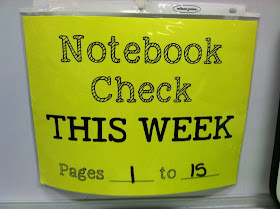The problem with linear programming is that my students don't appreciate the layers of the problem. They view linear programming as too many steps and too much work. They may not fully appreciate how useful it can be, even though they can completely understand that a business would like to maximize profit or minimize cost.
I tried to address this problem today with a small K'Nex experiment. Essentially, I wanted to give the kids the resources of a linear programming situation and ask them to solve it without the system of inequalities. The handouts I used are embedded. They're sized for composition books.
First, I had students attach the scenario to their notebooks and create a table. You can see this in the photo below.
I gave each group a bag with the amount of K'Nex specified in the question and asked them to build combinations of "bots" and "quarks" based on the restrictions in the scenario. Most groups latched on to the idea of needing to use as many pieces as possible, so they didn't record many pairs that had lots of left over pieces. After about 15 minutes of building and recording, I had groups report out. There were a couple of cases where students didn't agree about the maximum profit, but in every case they were able to find their error. Either they used more pieces than they were given because they didn't physically build the models, or they made a simple calculation error.
A hint if you try this: organize your bags so that a group has only one length rod and one shape connector. I had some students who were trying to make "different bots" by connecting the pieces in different ways. I had to review the definition of a bot with them and explain that the construction didn't make a difference as long as the materials were consistent. I think this issue would be muddled by offering different shapes and sizes of K'Nex to one group. It's also helpful when a piece ends up on the floor as you can more easily glance around and see which group it might have come from.
I heard many students say they enjoyed the activity and from listening to discussions around the room, I feel like I introduced this in a way that was concrete enough that most of my students grasped the concept of linear programming before we got to the algorithm. Yes!
Tomorrow we'll use the other pages from the embedded file to take some notes of all the steps of a different example and we'll use that process to verify our solution from today's exploration. In my experience, the hardest part for students is choosing the variables and writing the inequalities for the constraints.
What's your favorite toy to bring into the classroom?
Mathematically yours,
Miss B





